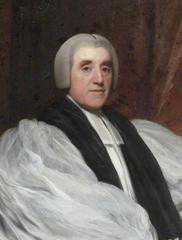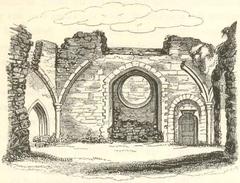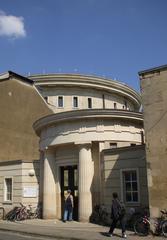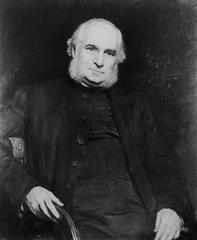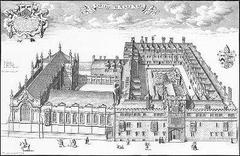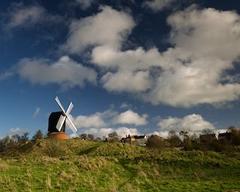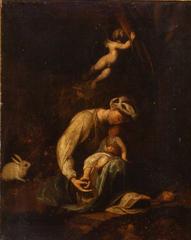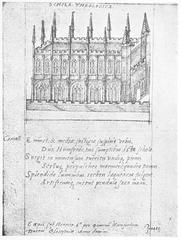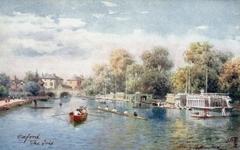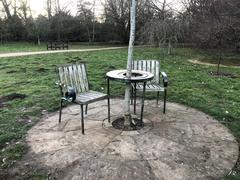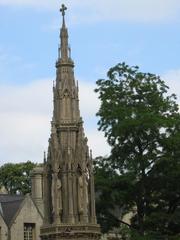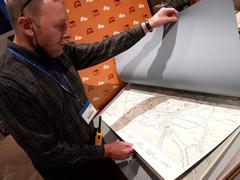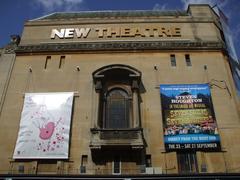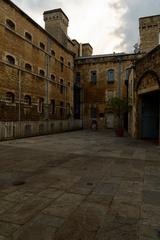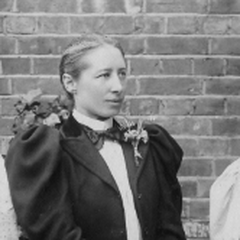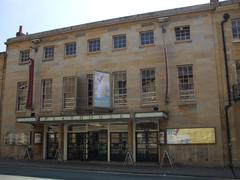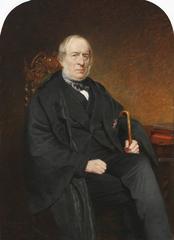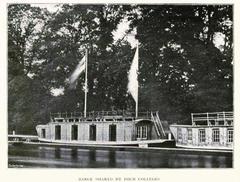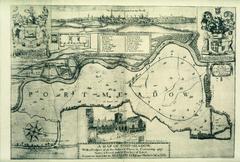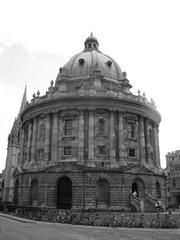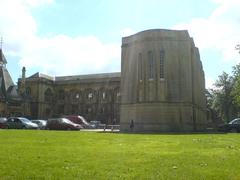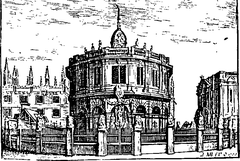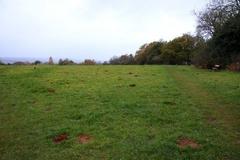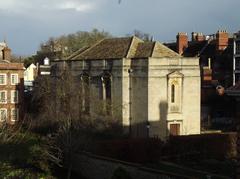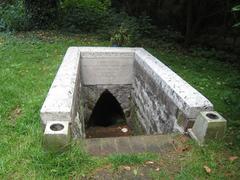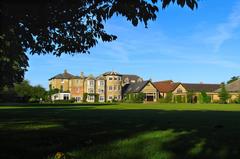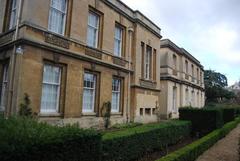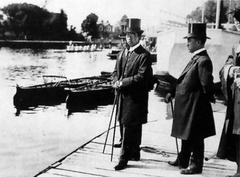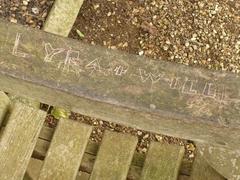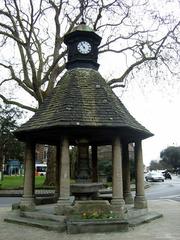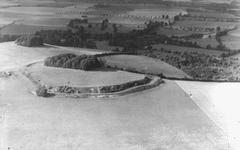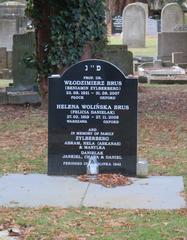Bastion 13 Visiting Hours, Tickets, and Travel Guide: Oxford’s Medieval Heritage
Date: 14/06/2025
Introduction
Bastion 13, nestled within the tranquil gardens of New College, Oxford, is one of the city’s most enduring medieval defensive structures. As a well-preserved segment of the ancient Oxford city wall, it offers visitors a direct connection to centuries of history—from Anglo-Saxon fortifications to pivotal moments in England’s past. This comprehensive guide explores Bastion 13’s origins, architecture, cultural significance, and provides practical visiting information to help you make the most of your journey into Oxford’s storied past (Oxford Preservation Trust, Historic England).
Contents
- The Historical Evolution of Oxford’s Defenses
- Bastion 13: Architecture and Preservation
- Visiting Bastion 13: Hours, Tickets, and Accessibility
- Travel Tips and Nearby Attractions
- Cultural Significance and Modern Context
- Frequently Asked Questions (FAQ)
- Visuals and Further Resources
- Conclusion and Next Steps
The Historical Evolution of Oxford’s Defenses
Early Defensive Origins
Oxford’s status as a fortified town dates to King Alfred the Great’s reign (AD 871–899), when the settlement—then “Oxenaforda”—was established as a burh to counter Viking threats. Archaeological evidence shows early earth and timber ramparts, which laid the groundwork for the city’s later stone fortifications (Oxford Preservation Trust).
Medieval Expansion and the City Wall
The transformation from timber defenses to stone walls began in the early 12th century, reflecting Oxford’s growing strategic and economic importance (Oxford Visit). The city wall, constructed primarily from local limestone, featured a circuit of approximately two miles, punctuated by over 20 semi-circular bastions, including Bastion 13. Key gates—North, East, South, and West—controlled access, commerce, and security (Oxford Preservation Trust).
The Role of Bastions
Bastions projected outward from the wall, allowing defenders to cover vulnerable flanks and repel attackers. Bastion 13, built in the early 13th century, stands as one of the best surviving examples of this strategic design (Historic England).
Incorporation into New College
In 1379, William of Wykeham founded New College, purchasing land that included Bastion 13 and parts of the city wall. The college agreed to maintain these structures, a commitment that has ensured their survival while much of the city wall elsewhere has disappeared (Oxford History).
Bastion 13: Architecture and Preservation
Architectural Features
Bastion 13 is a semi-circular tower constructed from coursed limestone rubble. It retains original medieval elements such as crenellated parapets and arrow loops, reflecting the military architecture of the period. The adjacent wall runs along the north and east perimeters of New College and is also Grade I listed, signifying its exceptional historical and architectural value (Historic England).
Preservation Efforts
New College’s centuries-long stewardship, stemming from its 14th-century agreement, has kept Bastion 13 and the adjacent wall exceptionally well-preserved (Oxford Preservation Trust). Regular maintenance and conservation ensure the site remains accessible and structurally sound for future generations.
Visiting Bastion 13: Hours, Tickets, and Accessibility
Location and Access
Bastion 13 is located within New College’s grounds, with visitor entry at New College Lane, OX1 3BN (Oxford History: City Wall). The bastion itself is not visible from the street, but can be accessed via the college’s gardens.
Visiting Hours
- General Opening: 10:30 am–5:00 pm (last entry 4:45 pm); hours may vary during university terms or special events.
- Check the latest hours: New College Visiting
Tickets
- Admission Fee: £8 for adults (as of June 2025); concessions for students, children, and seniors.
- Children under 7: Free with an adult.
- Group bookings and guided tours: Available by prior arrangement.
Accessibility
- Mobility: Most gardens and cloisters are accessible, but some uneven paths and steps near Bastion 13 may be challenging.
- Facilities: Toilets are available. There is no on-site café, but plenty of options are nearby.
Photography
Photography is permitted in the gardens and near Bastion 13, but flash and tripods may be restricted.
Travel Tips and Nearby Attractions
Getting There
- By Foot: Centrally located, New College is a short walk from major Oxford landmarks.
- Public Transport: Buses stop nearby on High Street; Oxford railway station is 15 minutes away on foot.
- By Car: Parking in central Oxford is limited. Use Park & Ride or public transport (Oxford Travel Guide).
Best Time to Visit
- Season: May to July for vibrant gardens and mild weather (9–17°C; occasional rain—bring a light jacket) (Oxford Weather in June).
- Crowds: New College is generally less busy than some other colleges.
Nearby Attractions
- Other Bastions: Bastions 11, 12, and 14 are also within New College grounds.
- Historic Sites: The Bodleian Library, Radcliffe Camera, and Sheldonian Theatre are within a 5–10 minute walk.
- Shopping and Dining: The Oxford Covered Market and many cafés are close by (Wanderlust Chloe).
Cultural Significance and Modern Context
Bastion 13 is not just a relic; it is a vibrant part of Oxford’s living heritage. Its preservation allows visitors to appreciate the city’s defensive strategies, urban evolution, and the interplay between medieval fortifications and the modern university landscape (Historic England). The bastion’s proximity to key university buildings and its inclusion in guided tours ensure it remains central to Oxford’s cultural and educational life.
Regular events, such as the triennial inspection by the Lord Mayor and city councillors, underscore the civic importance of the wall and bastions (Oxford History: City Wall).
Frequently Asked Questions (FAQ)
Q: Are Bastion 13 tickets required?
A: Yes, an admission ticket to New College is required.
Q: What are Bastion 13 visiting hours?
A: Generally, 10:30 am–5:00 pm (last entry 4:45 pm). Always check the official website for updates.
Q: Is Bastion 13 wheelchair accessible?
A: Gardens and cloisters are mostly accessible, but some uneven ground and steps may present challenges.
Q: Can I take photographs at Bastion 13?
A: Yes, photography is allowed in outdoor areas but flash and tripods may be restricted.
Q: Are guided tours available for Bastion 13?
A: Yes, through New College and independent local tour operators.
Visuals and Further Resources
- Include high-quality images of Bastion 13 set within the gardens, with alt tags such as “Bastion 13 Oxford historical site” and “New College Bastion 13 visiting hours.”
- Interactive maps and virtual tours may be available through New College or local tourism platforms.
- For more information:
Conclusion and Next Steps
Bastion 13 stands as a remarkable testament to Oxford’s medieval heritage, blending centuries of history with the vibrant life of a modern university. Its preservation within New College’s gardens provides visitors with a unique opportunity to engage with the city’s defensive past while exploring one of Oxford’s most beautiful collegiate landscapes.
To make the most of your visit:
- Check current opening hours and book your ticket via the New College website.
- Download the Audiala app for audio guides and exclusive content.
- Stay updated on Bastion 13 and Oxford’s historical sites by following local heritage projects on social media.
References and Official Sources
- Oxford Preservation Trust: City Wall Leaflet
- Oxford Visit: The Oxford City Wall
- Historic England: Bastion 13 Listing
- Oxford History: New College and City Wall
- Historic England: City Wall Section Listing
- Oxford Travel Guide
- Wanderlust Chloe: Oxford Day Trip Guide
- Britain Express: Oxford Travel
- Oxford Tour Guides
Explore Bastion 13 and Oxford’s other historical treasures today—and let the city’s medieval past inspire your next adventure.
